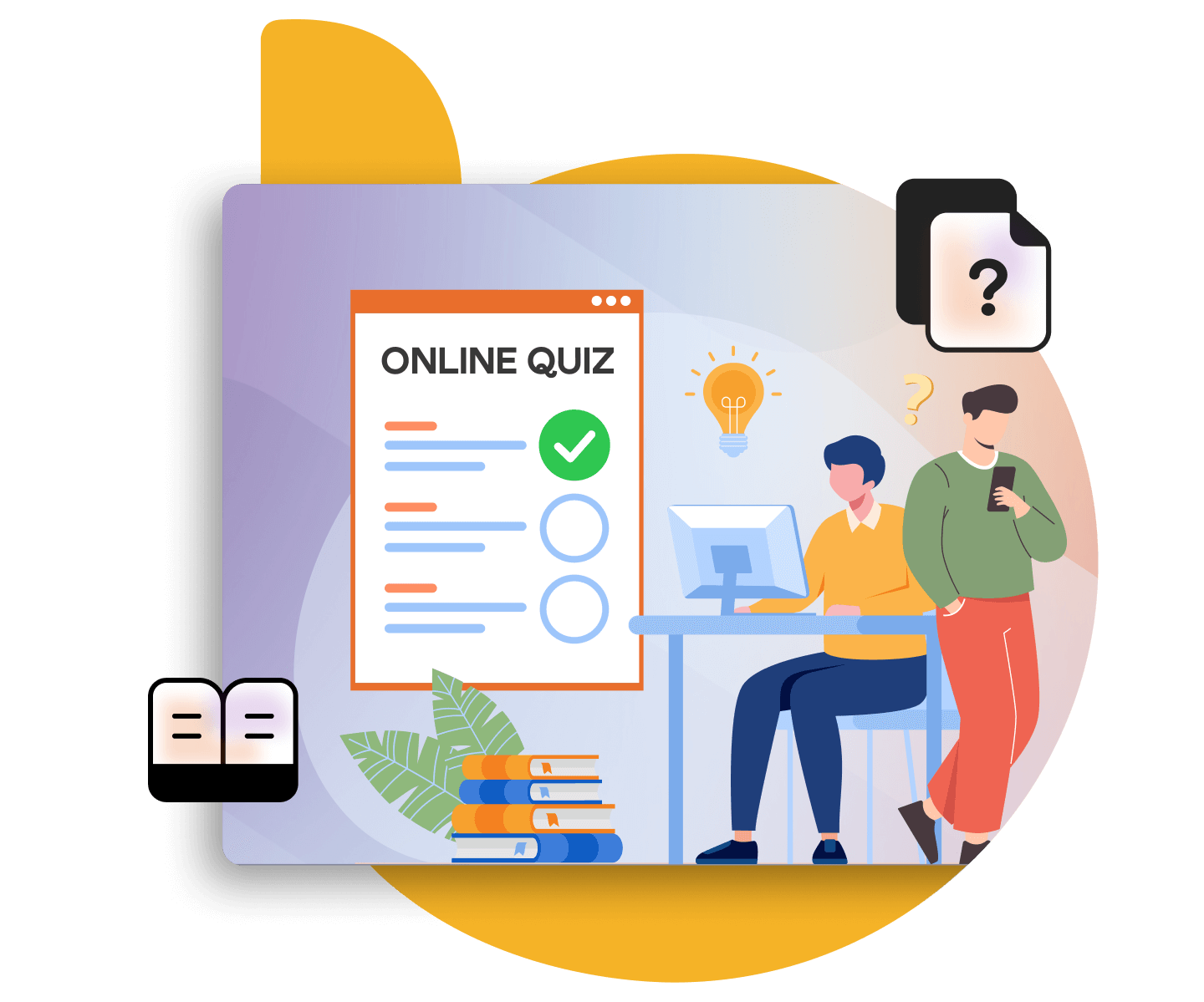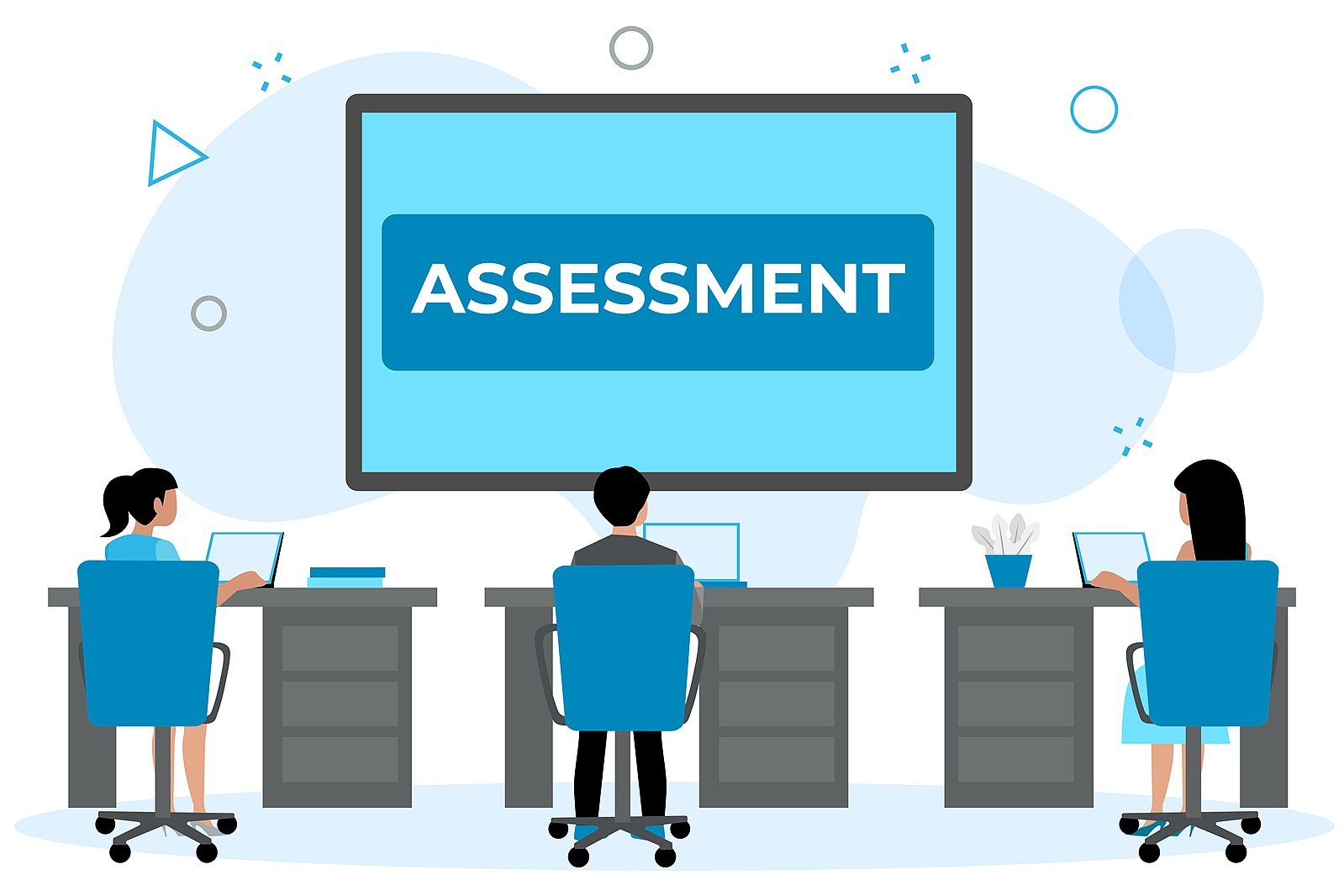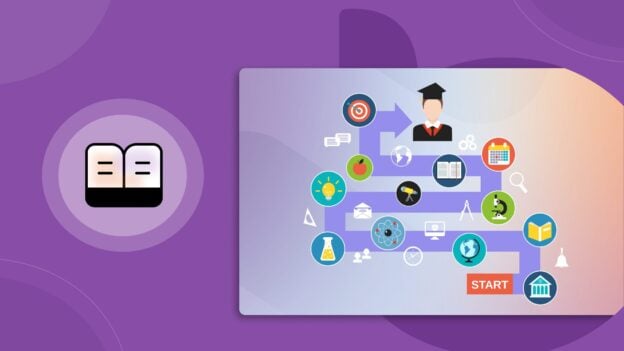Are you tired of creating assessments and quizzes that bore your students to tears? Do you find yourself struggling to come up with questions that actually test your students’ understanding of the material? Fear not, because we’re here to help!
Assessments and quizzes are a crucial part of any course, but creating ones that are both effective and engaging can be a real challenge. Luckily, with a few tips and tricks, you can turn your assessments and quizzes from snooze-fests into engaging and effective tools for learning.
In this post, we’ll be sharing my top tips for creating great assessments and quizzes that your students will actually enjoy taking. We’ll cover everything from defining learning objectives and writing effective questions to designing assessments that are engaging and grading them fairly.
So grab a cup of coffee (or tea, if that’s more your thing) and let’s dive in. By the end of this post, you’ll be a quiz and assessment ninja, creating online course assessment that your students will actually look forward to taking. Sounds too good to be true? It’s not! Let’s make it happen.
Defining Learning Objectives

When it comes to creating effective online course assessment and quizzes, one of the most important steps is defining clear and measurable learning objectives. Learning objectives are the specific goals that you want your students to achieve by the end of your course or lesson. They provide a roadmap for your assessments and quizzes, helping you to create questions that actually test your students’ understanding of the material.
So why are learning objectives so important? For one, they help you to stay focused and organized as you create your assessments and quizzes. Without clear learning objectives, you may end up creating questions that are too broad or too vague, which can make it difficult to accurately assess your students’ understanding of the material.
Additionally, learning objectives help to communicate to your students what they should be able to do by the end of the course or lesson. This helps to give them a sense of purpose and direction, which can be motivating and engaging. If your students know exactly what they’re working towards, they may be more likely to put in the effort to achieve those goals.
So how do you create clear and measurable learning objectives? Here are a few tips:
1. Start with the big picture: Begin by thinking about what you want your students to be able to do by the end of the course or lesson. What are the most important skills or concepts that they should master?
For example, if you’re teaching a course on biology, your learning objectives might include things like “Students will be able to identify the different types of cells” or “Students will be able to explain the process of photosynthesis.”
2. Be specific: Your learning objectives should be clear and specific, so that both you and your students know exactly what you expect from them. Use action verbs to describe what your students should be able to do.
For example, instead of saying “Students will understand the concept of photosynthesis,” you might say “Students will be able to explain the process of photosynthesis.”
3. Make them measurable: Your learning objectives should be measurable, so that you can accurately assess whether or not your students have achieved them. This means that they should be observable and quantifiable.
For example, instead of saying “Students will appreciate the beauty of poetry,” you might say “Students will be able to identify at least three literary devices used in a poem and explain how they contribute to the overall meaning of the poem.”
Types of Online Course Assessment
There are several different types of assessments that you can use in your course or lesson. Each type of assessment serves a different purpose, and understanding when and how to use each type can help you create effective and engaging assessments and quizzes. Here’s a brief overview of some of the most common types of assessment:
Diagnostic assessment: A diagnostic assessment is used to gauge students’ prior knowledge and understanding of a topic. It can help you identify any gaps in your students’ knowledge and adjust your teaching accordingly. For example, if you’re teaching a course on math, you might give your students a diagnostic assessment at the beginning of the course to see what they already know.
Formative assessment: A formative assessment is used to monitor students’ learning as you teach a topic. It can help you identify any areas where your students are struggling and adjust your teaching accordingly. Formative assessments can take many forms, such as quizzes, short assignments, or class discussions.
Interim assessment: An interim assessment is used to check students’ progress midway through a course or lesson. It can help you identify any areas where your students are still struggling and adjust your teaching accordingly. Interim assessments can be helpful for both you and your students, as they can provide a sense of how much progress has been made.
Benchmark assessment: A benchmark assessment is used to compare students’ progress to a set standard. It can help you determine whether or not your students are meeting the goals and objectives of your course or lesson. Benchmark assessments are often used at the end of a unit or course to evaluate overall progress.
Summative assessment: A summative assessment is used to evaluate students’ overall understanding of a topic at the end of a course or lesson. It can take many forms, such as a final exam, a research paper, or a project. Summative assessments are often used to assign grades and provide feedback on overall performance.
So when should you use each type of assessment? It really depends on your goals and objectives for the course or lesson. If you want to identify any gaps in your students’ prior knowledge, a diagnostic assessment can be helpful. Or If you want to monitor learning as you teach, formative assessments can be useful. If you want to compare progress to a set standard, a benchmark assessment may be helpful. And if you want to evaluate overall understanding of a topic, a summative assessment is likely the way to go.
Types of Quiz Questions

When it comes to creating effective quizzes, choosing the right type of question can make all the difference. There are several different types of quiz questions you can use, each with its own strengths and weaknesses. Here’s an overview of some of the most common types of quiz questions:
1. Multiple choice: Multiple choice questions present a question or statement with several possible answers. The student selects the correct answer from the choices provided. Multiple choice questions assesses a variety of knowledge and skills, from basic recall to higher-order thinking.
Example: Which of the following is a primary color?
A) Red
B) Purple
C) Green
D) Orange
2. Multiple Response: Multiple response questions present a question or statement with several possible answers, and the student must select all of the correct answers. Multiple response questions can be used to assess knowledge of complex concepts.
Example: Which of the following are renewable energy sources? Select all that apply.
A) Coal
B) Solar
C) Wind
D) Natural gas
3. True/False: True/false questions present a statement and the student selects whether the statement is true or false. True/false questions are easy to write and can be used to assess basic knowledge and understanding.
Example: The sun rises in the east and sets in the west. True or false?
4. Short Answer: Short answer questions require students to provide a brief written response to a question. Short answer questions can be used to assess understanding and application of knowledge.
Example: What is the capital of France?
5. Fill-in-the-Blank: Fill-in-the-blank questions present a statement with one or more words missing, and the student must fill in the correct word(s). Fill-in-the-blank questions can assess knowledge of specific terminology or facts.
Example: The Declaration of Independence was signed in July ___, 1776.
6. Matching: Matching questions present two lists of items and the student must match the items from one list to the corresponding items in the other list. Matching questions can be used to assess knowledge of relationships between concepts.
Example: Match the president to the correct term in office:
A) George Washington
B) Abraham Lincoln
C) Franklin D. Roosevelt
D) Barack Obama
i. 1789-1797
ii. 1861-1865
iii. 1933-1945
iv. 2009-2017
7. Essay: Essay questions require students to write a longer response to a question or prompt. Essay questions can be used to assess higher-order thinking skills, such as analysis and synthesis.
Example: Describe the causes and consequences of the Civil War.
Designing Assessments and Quizzes

When it comes to designing online course assessment and quizzes, there are a number of key factors that can help ensure they are effective tools for measuring learning outcomes. Here are some tips to consider:
Keep it relevant: Make sure that the assessment or quiz is closely aligned with the learning objectives you have identified for the course. This will help ensure that the questions are meaningful and the results are actionable.
Consider the format: There are many different types of online course assessment and quizzes, each with their own strengths and weaknesses. Consider which format will best suit your learning objectives and the material being covered. For example, multiple choice questions are great for assessing knowledge, while essay questions can be useful for measuring critical thinking and problem solving skills.
Use clear and concise language: Make sure that the questions and instructions are written in language that is easy to understand. Avoid using jargon or technical terms that may confuse learners.
Use visuals where appropriate: Visual aids such as diagrams, charts, and graphs can be useful for helping learners understand complex concepts or relationships between different ideas.
Incorporate feedback: Consider providing learners with feedback on their performance on the assessment or quiz. This can help them understand where they need to focus their efforts to improve their understanding of the material.
Examples of Well-designed Online Course Assessment and Quizzes:
- A quiz that includes a mix of different types of questions, such as multiple choice, true/false, and short answer, to assess different types of knowledge and skills.
- A formative assessment that includes a mix of open-ended questions and feedback to help learners understand how they are progressing towards their learning objectives.
- An assessment that includes a mix of text-based questions and visual aids to help learners understand complex concepts.
Examples of Poorly-designed Online Course Assessment and Quizzes:
- A quiz that includes questions that are not closely aligned with the learning objectives of the course.
- An assessment that includes questions that are overly complex or confusing, making it difficult for learners to understand what is being asked of them.
- A quiz that includes only multiple choice questions, making it difficult to measure other types of knowledge and skills.
Grading and Feedback

Grading and feedback are important components of any assessment or quiz. They not only provide learners with a sense of how well they have performed, but also help them to understand where they need to focus their efforts to improve their understanding of the material. Here are some tips to help you grade assessments and quizzes fairly and efficiently, and provide effective feedback:
Establish clear grading criteria: Make sure that you have a clear set of grading criteria established before you begin grading. This will help ensure that you are grading consistently and fairly across all learners.
Use a rubric: Consider using a rubric to help you grade assessments and quizzes. A rubric provides a clear set of guidelines for grading, making it easier to ensure that you are grading consistently and fairly.
Use technology: Technology can be a great tool for grading online course assessment and quizzes efficiently. Many learning management systems (LMS) have built-in grading tools that can help you grade assessments and quizzes quickly and accurately.
Provide feedback: Providing feedback is important for helping learners understand where they need to focus their efforts to improve their understanding of the material. Consider providing feedback on both correct and incorrect answers, and be specific about what the learner did well and where they can improve.
Use a mix of feedback types: There are many different types of feedback that can be effective, including written feedback, audio feedback, and video feedback. Consider using a mix of different types of feedback to keep learners engaged and motivated.
Examples of Effective Feedback:
- Written feedback that is specific and actionable, highlighting both strengths and areas for improvement.
- Audio feedback that is delivered in a clear and engaging tone, providing learners with a sense of how well they are progressing.
- Video feedback that includes examples of correct and incorrect answers, helping learners to understand where they need to focus their efforts to improve their understanding of the material.
Examples of Ineffective Feedback:
- Feedback that is too general or vague, providing little guidance to learners on how they can improve their performance.
- Feedback that is overly critical or negative, which can discourage learners and make them feel demotivated.
- Feedback that is delivered in a monotone or unengaging manner, making it difficult for learners to stay focused and engaged.
Time to Create Effective Online Course Assessment & Quizzes
Creating effective assessments and quizzes is an important part of the learning process. By following the tips and best practices outlined in this post, you can create assessments and quizzes that are engaging, effective, and help learners achieve their goals.
If you’re looking for an online course platform that can offer you endless flexibility along with fully-functional quizzes and assignments to complement your course, BuddyBoss is certainly the best choice for you. BuddyBoss offers multiple question types, manual limitations, multimedia supported Q&A and many more to provide your students with great assessment experience.
To Recap the Article
Our key recommendations for creating effective assessments and quizzes include:
- Defining clear and measurable learning objectives
- Selecting the right type of assessment for your needs
- Choosing the appropriate type of quiz questions
- Designing assessments and quizzes that are engaging and effective
- Providing fair and effective grading and feedback
We hope that this post has been helpful in guiding you through the process of creating effective online course assessment and quizzes. If you have any additional tips or best practices to share, please feel free to leave them in the comments below.
Thank you for reading, and best of luck in creating great assessments and quizzes for your learners!












